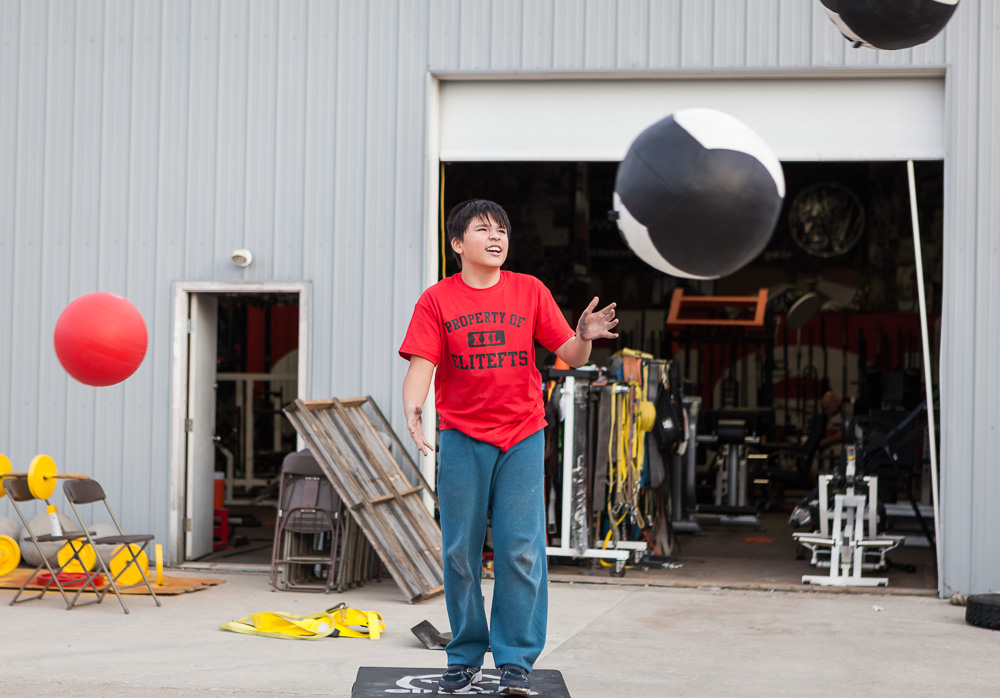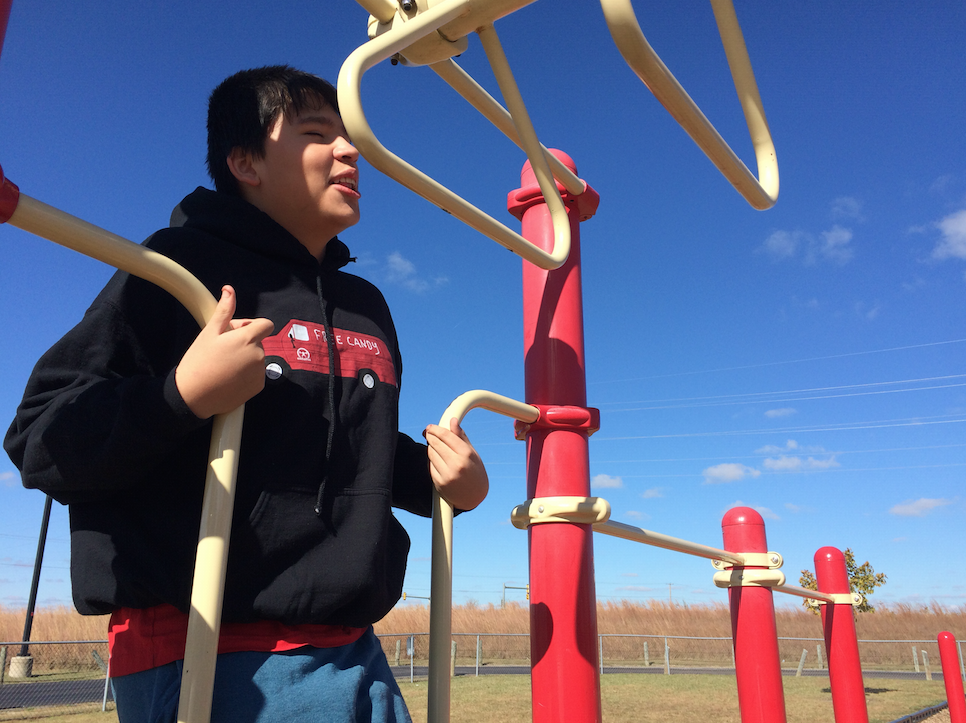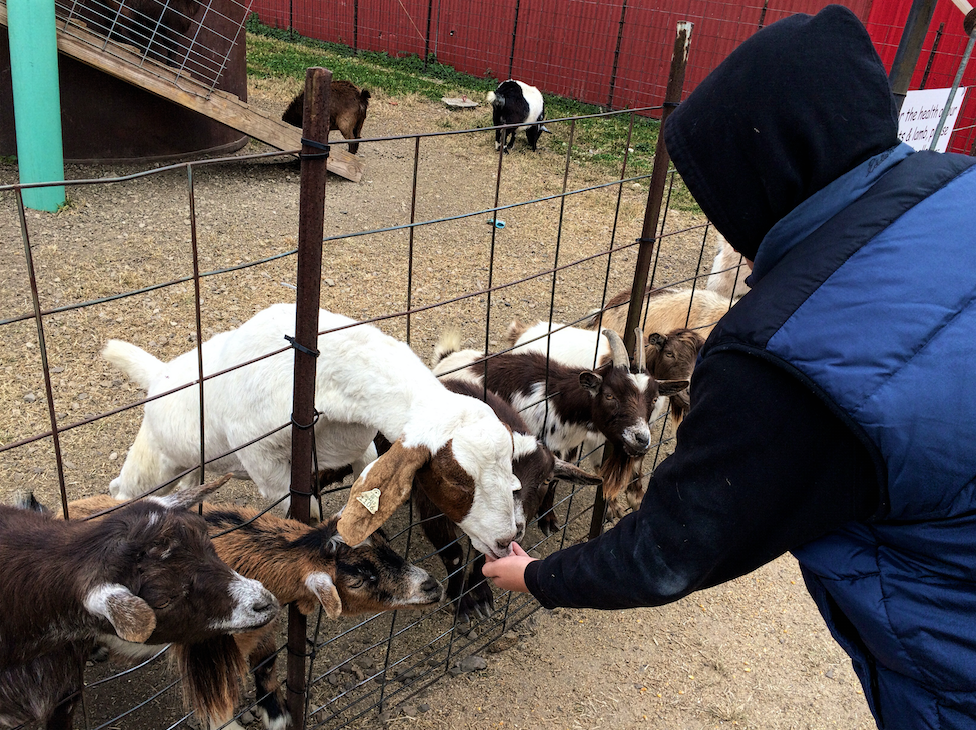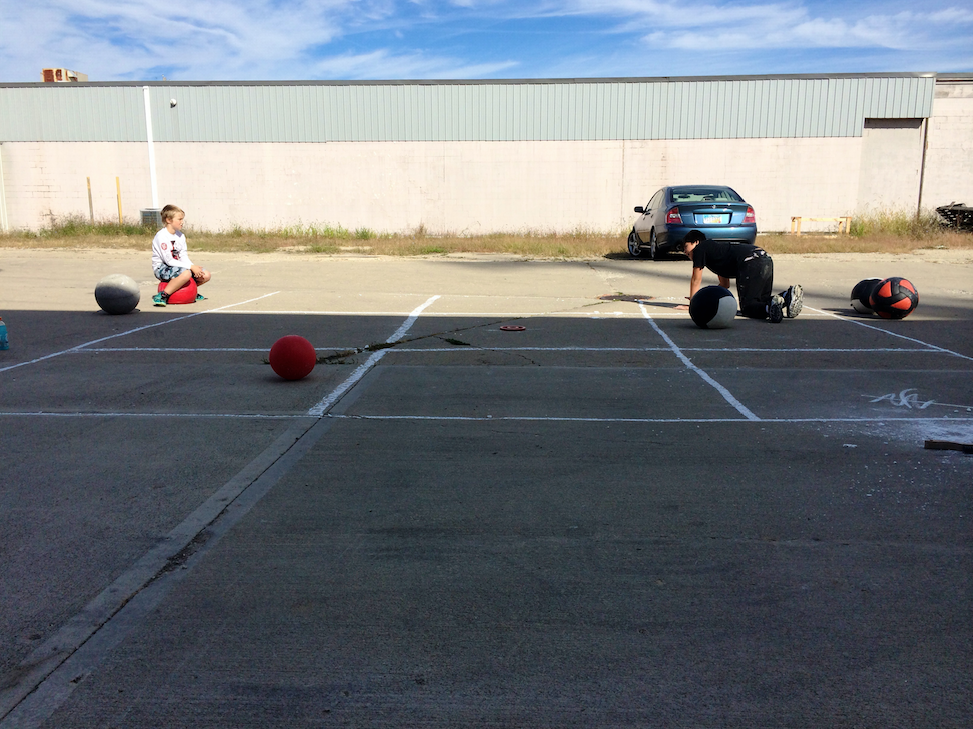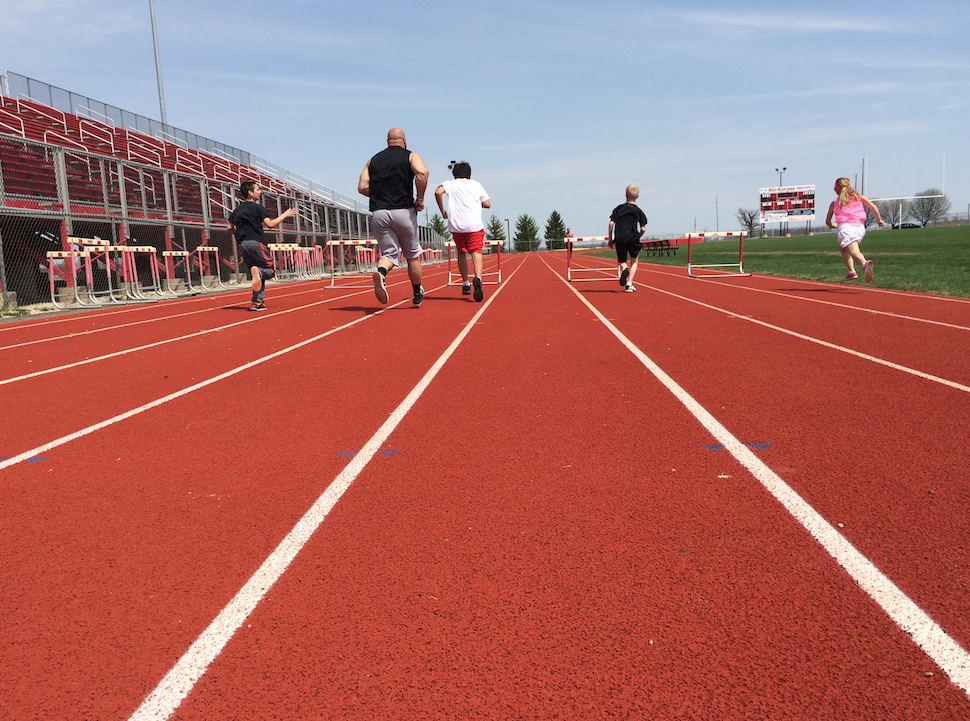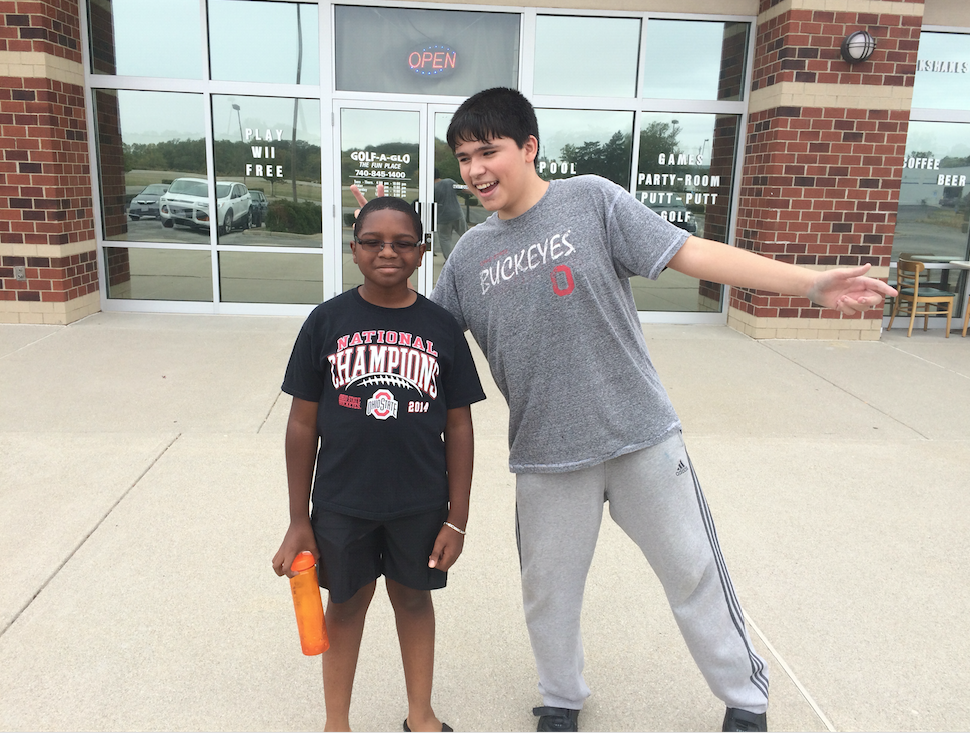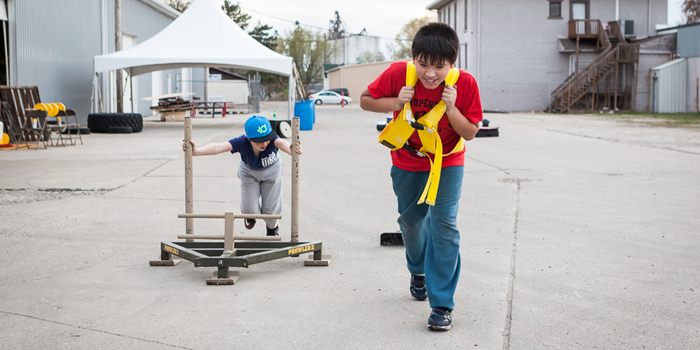
Once you know a child with autism, you know one child with autism.
A colleague of mine said this the other night as we picked each other’s brain on the specifics of a new movement-based program to be held at the Nisonger Center at the Ohio State University.
Surely he’s not the first to have said this, but it’s always worth repeating and expanding upon; it’s the overarching concept that allows OSU’s social and vocational support group program for young adults with autism spectrum disorders to thrive.
Our vision: blend fitness and social skills into a unified and flexible program for high-functioning teens and young adults on the autism spectrum.
As I’ll soon share all the specifics about the launch and its execution, the purpose of this article is to break down the working parts of the program and illustrate how social skills learned in the home and classroom can transfer to the real world by gaining momentum through movement and strength.
The list below shows many options of how to blend fitness and social skills into a chunk of time and progress from private gym training to movement-based play-dates with a friend or teammate. Notice how training types one through eight are rooted in movement while the comforts of familiarity lead into off-site exploration and social networking.
Note: This is not a program but a framework to place a program within.
The starting place is based on the needs of the child. For example, Gym Training may be the launch pad, followed by a slow progression to the eighth option. Based on the needs of the child, it may be advantageous to pick and choose a training type in al a carte style, providing a new adventure weekly.
Please assume that every training type and its schedule is created for the individual, based on his/her strengths, weaknesses, sensitivity, and interests.
1. Gym Training
This type of training takes place in a gym setting. It’s a weekly commitment to complete a set of movement-based objectives within an appropriate designated chunk of time. The primary social connection is the relationship between the trainer and the client.
RELATED: Four Exercises Your Child Wants To Do
Small changes to consider to easily transition from Gym Training to ½ Gym, ½ Off-Site: Train aside other gym members and invite interaction and communication to build associations between training and someone other than the trainer. Encourage and model appropriate gym etiquette and social interaction through common courtesy, patience, acknowledgement, conversation, and spatial awareness.
Slowly incorporate new places to work out within the gym area to communicate that training can be performed in multiple locations with a variety of equipment and people. Consider the parking lot, staircase, gym entrance, cardio room, and powerlifting room as alternatives.
2. ½ Gym, ½ Off-Site
This type of training splits a gym session into two halves: one half takes place in the gym, the other half takes place off-site. It’s a weekly commitment to complete movement-based objectives in and outside of the gym. The off-site portion gets you out of the gym and places you into a new location that requires physical activity. The location should be close in proximity to the gym and easily accessible (public and free). It is here that she’ll be able to exercise social skills learned in the gym setting, refine, and accumulate more.
In these offsite locations, peer-to-peer interaction is likely. This is a great opportunity to introduce social communication and team-building skills when/if appropriate: engaging in conversation, taking turns, winning, losing, leadership, accepting criticism, maintaining a positive attitude, knowing when to take a break.
Easily accessible locations include: walking/bike trail, public playground, high school track, and public pool. As familiarity occurs by being offsite, slowly add new locations. Begin to lengthen to the distance between the gym and the off-site location.
3. Off-Site Training
This type of training takes place at an off-site location. It’s a weekly commitment to complete movement-based objectives outside of the gym. The location can be nearby or far, but I wouldn’t exceed 30-60 minutes of driving time. One suggestion is to begin the session at the gym (begin with familiarity and review the schedule) and break off from there. You’ll have a great opportunity to gauge the child's readiness before venturing into unusual territory. As you know, some training days should not take place.
Choose locations that are movement-based that will refine previous lessons, social and physical, and introduce new experiences. In most cases, you’ll be surrounded by other individuals that are looking to have fun while moving — this gives the activity great positive exposure and plenty of opportunity to engage and reciprocate with others. These locations tend to be game-like too, so this is a great opportunity to further develop team-building skills: joining a team, taking turns, winning, losing, leadership, accepting criticism, maintaining a positive attitude, and knowing when to take a break.
Off-site locations that I recommend are: Trampoline parks, the zoo, bowling, a public pool, a corn maize farm, and putt-putt.
4. ½ One-to-one, ½ Training Partner
This type of training takes place in the gym setting. It’s a weekly commitment to complete movement-based objectives inside the gym individually and then with a training partner.
The training partner may be a friend or sibling, someone who is around the same age with or without autism. In this type of training we are easing into working with another to complete our workout. We start off with individual attention and then transfer our skills with a buddy. The idea is that when the children are together, you’re creating an environment that helps both of them work as a unit. Ideally you’d like to pair two that physically and socially compliment one another by placing them in a situation where they can feed off one another. Therefore, what one is lacking, the other can fill in the gap and in the process both can learn how the gap was filled. You will guide this identification process.
Choose activities that will benefit and provide balance for each child. For example, one child may be very athletic and looking for a tough workout, whereas the other child may be looking to have fun with play. Decide how both worlds can be blended into one — a world that is productive, worthwhile, and fun.
5. Group Training: Gym
This type of training takes place in the gym setting. It’s a weekly commitment to complete movement-based objectives inside the gym with a training partner.
Ideally, this session would begin with the same peer from the previous type of training. The only difference between this and the previous type is now we’re ready to complete the entire workout with a buddy. Similar to ½ One-to-one, ½ Training Partner, the key is creating an environment where both clients thrive for the duration of the session. The union is providing opportunity for each child that would otherwise be non-existent.
RELATED: Take Your Training Day to the Zoo
6. Group Training: Offsite
This type of training takes place at an off-site location. It’s a weekly commitment to complete movement-based objectives offsite with a training partner. Choose locations that are movement based that will refine previously learned objectives, social and physical, and introduce new experiences. When planning, consider a meeting place (at the gym or at the off-site location) and consider if any help (someone other than you) is necessary. Although you are familiar with the children and the children are familiar with each other, the dynamics change once the environment changes. Consider planning for unpredictable event and secure extra help. Extra help can always be minimized (if necessary) but without help, you have eliminated possible sources of quick remediation. At first, choose off-site locations that have minimal working parts (admission, wait time, extra space, lots of people, heavy work loads). When comfortable, begin to add more working parts.
7. Home Training
This type of training takes place at home. Although it’s marked as number seven within this list, let's back up to its initial starting place. I begin to utilize this type of training immediately. Home training at this initial level invovles choosing one familiar exercise or activity/game from a gym session and practicing it at home with a family member. Depending on the needs of the child, this may be a daily or weekly task, sometimes only taking five minutes to complete (including acknowledgement, setup, review of assignment, performance, and tracking). This task is presented as homework and demonstrated for at least one home member to witness expectations. As a reminder, this task is nothing new. It is familiar and easily attainable. One of the most important aspects of this assignment is that you’re beginning the transfer process of awareness, practice time, formation of new habits, changing roles, and taking responsibility.
Placed as number seven within this list, home training transforms into an entire training session instead of a mini assignment. At this point in the progression, the child is well-versed with training in a group dynamic in a variety of environments. Now at home, this is a great opportunity to get the family involved, get creative with indoor and outdoor space, and create new family habits. Schedule flow is similar to gym training.
8. Play Date with Friend
This type of engagement is exactly what the title suggests; it’s a play date! It’s a weekly or monthly commitment to have a play date with a friend combining movement, personal interest/choice, and fun. This is a great opportunity to ask where and what the children would like to go and do. If the children choose the same activity, this is a plus. If the children have different ideas in mind, choose one and then emphasize how you’ll do the other activity another time, or combine multiple ideas into one session (for example: 30 minutes of batting cages followed by 15 minutes of game time and finish up with 15 minutes of lunch). Note: Although the emphasis is on play and freedom, this still requires you to set up the engagement with structure. What happens within the structure is executed with flexibility and led by the children. Minimize your involvement if appropriate and allow the children to take the lead. Play dates naturally reveal child strengths and weaknesses; therefore use future training sessions as your outlet to strengthen weaknesses noted during the play date. Now is not the time. Obviously, interject if safety is in question. Similar to group training off-site, begin these dates with extra hands and eyes, then minimize help when and if appropriate.
Training takes on a whole new meaning when you’re working with children and young adults with high-functioning autism. It’s so much more than being in a gym setting, performing movements, and lifting weights. In this population, the ability to connect with one another on a consistent and responsive basis is huge and oftentimes limited.
Think about it — how many people in the child's life get him or her moving (literally and consistently) in and out of comfort zones all while experiencing fun, accomplishment and constant interaction with others?
Who else in the child's life focuses on what he or she can do, clearing the pathway for a life-long commitment to creating healthy choices?
Hopefully this begins with you.
In future articles, I’ll break down each training type further and give samples with implementation examples. In the meantime, to read more articles on the subject, visit my article page.









